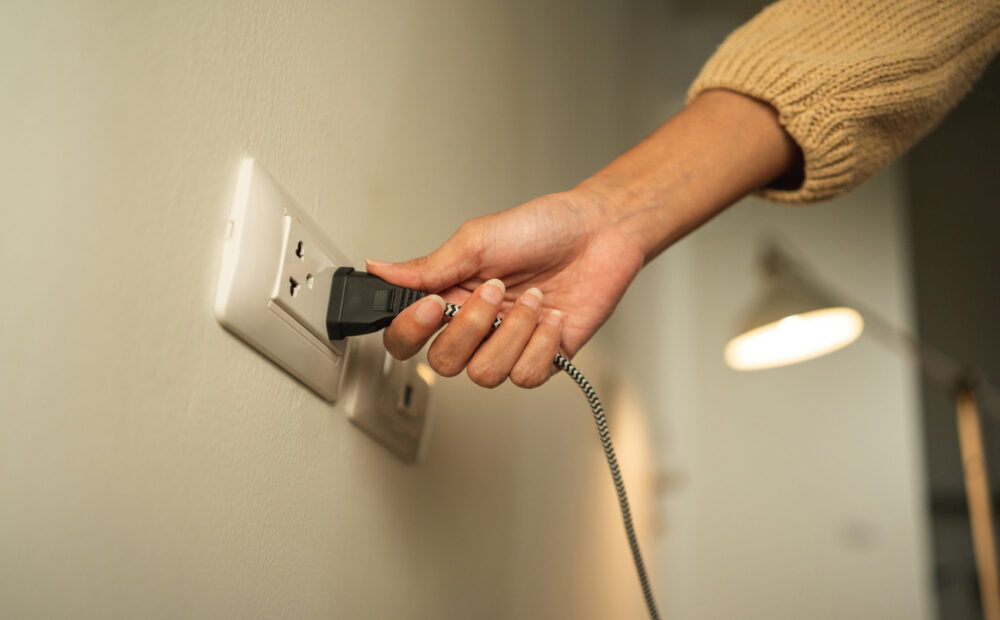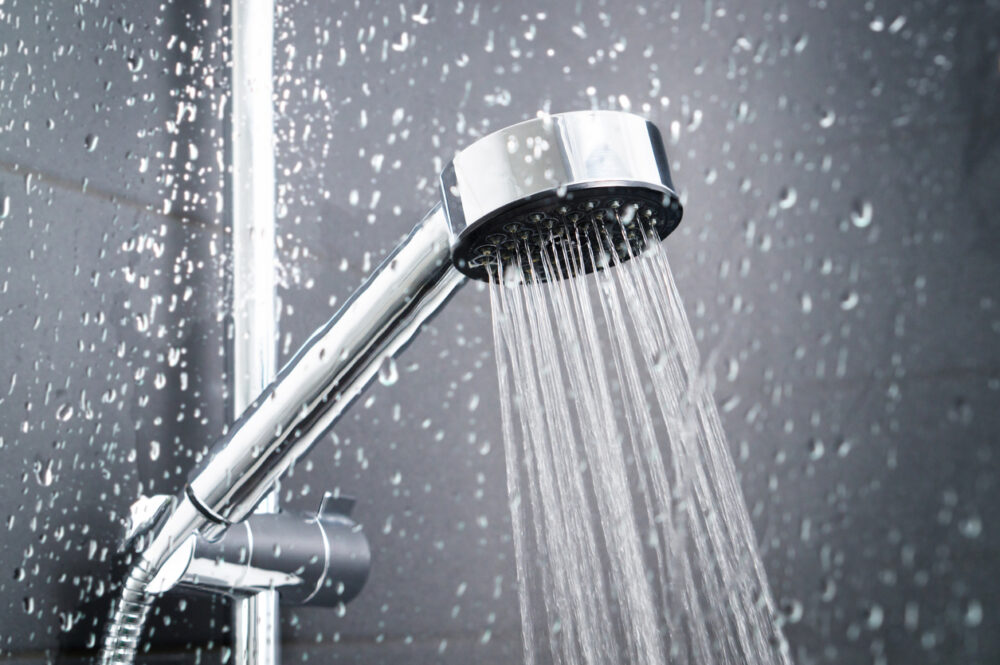Tiny tweaks around the house can quietly add up to serious savings.

When it feels like every dollar disappears the second it hits your account, small financial wins at home can actually feel huge. You don’t need to sell your stuff or start couponing like a pro to cut back. The key is consistency with tiny changes that quietly chip away at your monthly expenses. These aren’t dramatic lifestyle overhauls—they’re the kind of habits you can start today without feeling like you’re giving something up.
It’s surprising how much money leaks through the cracks of daily routines. A few extra minutes in the shower, a neglected appliance, or a passive subscription can quietly drain your budget. But with a handful of low-effort swaps, you could find yourself with a few hundred extra bucks each month—and that breathing room can make all the difference. Here are 11 small home habits that, when added up, can help you pocket an extra $200 or more every month.
1. Unplug appliances when they’re not in use.

Even when they’re turned off, many appliances and chargers keep drawing power. It’s called “phantom load,” and it adds up fast. Think toasters, coffee makers, TVs, and game consoles—those little red standby lights are costing you real money. Unplugging them when they’re not in use can shave several dollars off your electric bill without you even noticing a difference, according to James Martin at CNET.
Power strips make it even easier. One switch cuts off juice to everything plugged in. You don’t have to unplug every single device obsessively, but focusing on the biggest offenders (like entertainment systems or office setups) can make a real impact. It’s a simple tweak that doesn’t mess with your lifestyle—but your monthly bill will feel the difference.
2. Wash clothes with cold water.

Hot water sounds like it gets things cleaner, but for everyday laundry, it’s often overkill. Heating water accounts for up to 90% of a washing machine’s energy use. Unless you’re tackling super dirty or germ-filled loads, cold water gets the job done just fine—and your clothes will last longer too.
Detergents today are designed to work well in cold cycles, so you won’t sacrifice freshness. If you wash several loads a week, switching to cold could trim a noticeable chunk off your energy bill, as reported by the experts at GE Appliances. Plus, you’ll reduce fabric wear, meaning your favorite shirts and towels won’t need replacing as often. It’s a quiet win for both your wallet and your wardrobe.
3. Use a drying rack instead of the dryer.

Dryers are one of the most power-hungry appliances in your home. Using a drying rack even a few times a week can cut back on your electricity costs in a big way, as stated by Mabel Banfield-Nwachi at The Guardian. It’s also gentler on your clothes, so you save money by not having to replace worn-out pieces as often.
You don’t have to go full pioneer mode—just hang up lightweight clothes, delicates, or gym wear and let them air dry. Set up a rack in the bathroom or near a sunny window and you’ll barely notice the difference in routine. You might even enjoy the fresh, crisp feel of air-dried fabric once you get used to it.
4. Cut down your shower time.

Hot showers feel amazing, but they’re expensive when you factor in water and heating costs. Cutting your shower down by just three to five minutes can save gallons of water and reduce your energy use significantly. If multiple people in your home make the change, the savings multiply quickly.
You don’t have to rush through a rinse like you’re in boot camp. Just be mindful of how long you’re lingering. Skip zoning out or scrolling while the water runs. Some people even set a playlist with a five-minute track to stay on target. You still get clean and refreshed, just without flushing dollars down the drain.
5. Meal prep instead of ordering out.

You don’t have to cook every single meal from scratch, but prepping lunch or dinner for a few days at a time can dramatically cut down on your takeout temptation. Ordering in, even just a few times a week, can wreck your budget fast. Those delivery fees and tips add up faster than people think.
Meal prepping doesn’t have to be gourmet. Simple grain bowls, pasta dishes, or wraps can be thrown together in batches and stored for grab-and-go convenience. You’re not just saving money—you’re also avoiding that end-of-day decision fatigue that makes ordering out feel like the only option. Small habit, big reward.
6. Cancel one subscription you barely use.

Chances are you’ve got at least one streaming, fitness, or subscription box service you keep “just in case.” But if it’s not getting regular use, it’s probably wasting your cash. Review your bank statement or app store subscriptions and be honest—are you really getting $15 of value each month?
Even cutting just one unnecessary subscription frees up instant cash. And if you miss it, you can always go back later. Most people forget about these recurring charges, which quietly bleed money in the background. Reclaiming that wasted cost is one of the easiest financial wins out there.
7. Switch to LED light bulbs.

LEDs use up to 80% less energy than old-school incandescent bulbs—and they last years longer. If you haven’t upgraded your bulbs yet, this small swap can create a lasting drop in your energy usage. The upfront cost is a little higher, but they pay for themselves quickly and keep saving money long-term.
Start with the rooms where lights are on the most—kitchen, bathroom, and living room. You’ll see the difference on your next energy bill without having to change any part of your daily routine. It’s an easy home upgrade that makes your space more efficient without sacrificing comfort or brightness.
8. Set your thermostat one degree lower (or higher).

Adjusting your thermostat by just one or two degrees can make a big dent in your utility bills. In winter, try lowering it a notch and throwing on a cozy hoodie or socks. In summer, raise it slightly and use fans to circulate air. The change feels small but can result in significant savings over time.
If you install a smart thermostat, you can take this a step further. It’ll adjust based on your schedule automatically, so you’re not heating or cooling an empty house. Even a manual change, though, can prevent your HVAC system from working overtime. It’s a classic budget tip that still works wonders.
9. Brew your own coffee at home.

That daily coffee shop run may seem harmless, but even modest drinks add up quickly. Brewing at home costs a fraction of what you’d pay for a latte—and with a few tools, you can make it taste just as good. A French press or pour-over setup gives café-quality without the overhead.
Make it part of your morning ritual, and you might find you enjoy the quiet time before your day begins. You can still treat yourself occasionally, but cutting back even three trips a week saves serious money. Plus, you control the ingredients, which usually means a healthier cup too.
10. Use grocery pickup or delivery to avoid impulse buys.

Wandering store aisles when you’re hungry or tired is a surefire way to blow your food budget. Ordering online helps you stick to a list and avoid those tempting extras that sneak into your cart. Pickup options are often free, and even small delivery fees can be worth it if you avoid overspending.
You’ll also see a running total as you add items, which makes it easier to stay within your target. It’s like having a built-in budget coach. Over time, avoiding impulse snacks, duplicates, and those “just in case” items can shave real dollars off your grocery total without feeling like a sacrifice.
11. Clean out your fridge before shopping.

It sounds ridiculously simple, but taking five minutes to check your fridge and pantry before you shop can prevent so much waste. How many times have you bought something, only to realize you already had it—or worse, discover the old one molding in the back?
Doing a quick inventory helps you use what you already have and plan smarter meals. It also keeps you honest about what you’re really eating. Reducing food waste not only helps the planet, it also keeps you from throwing money in the trash—literally. It’s one of the most underestimated ways to save.
